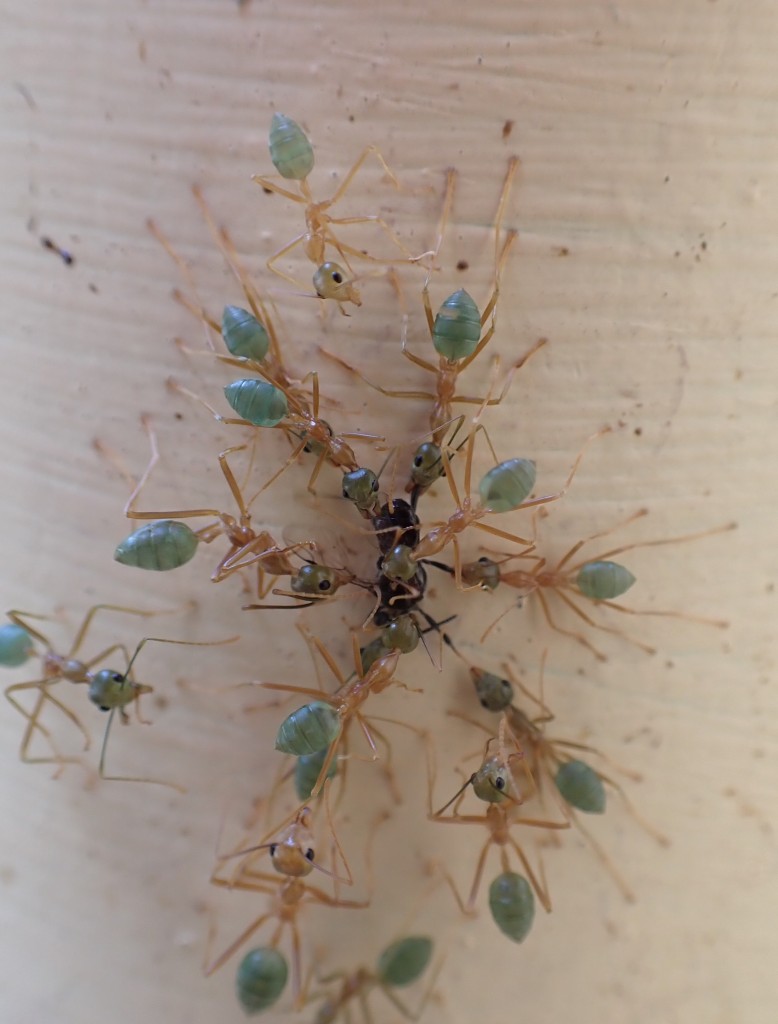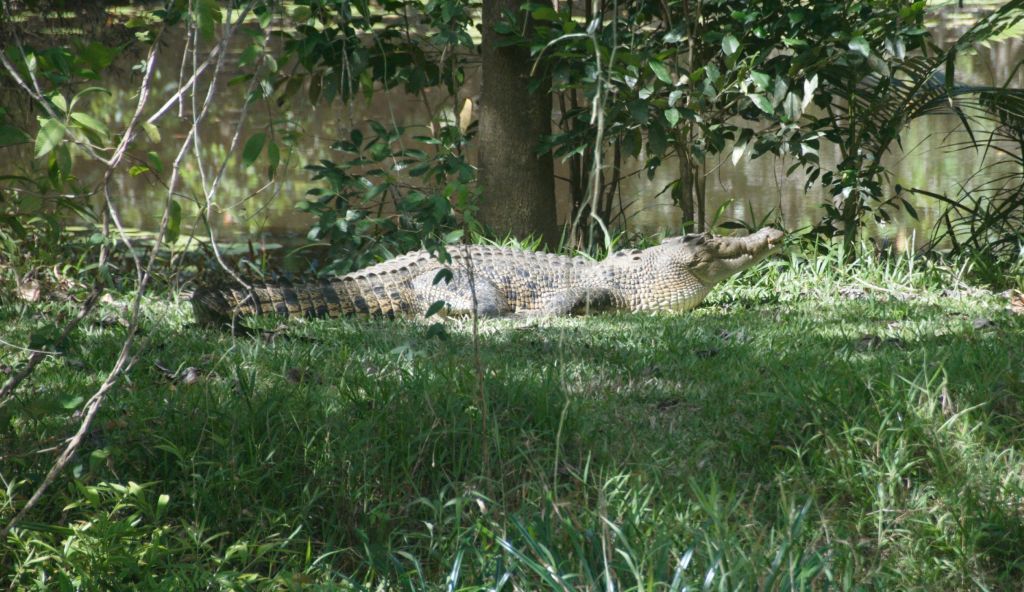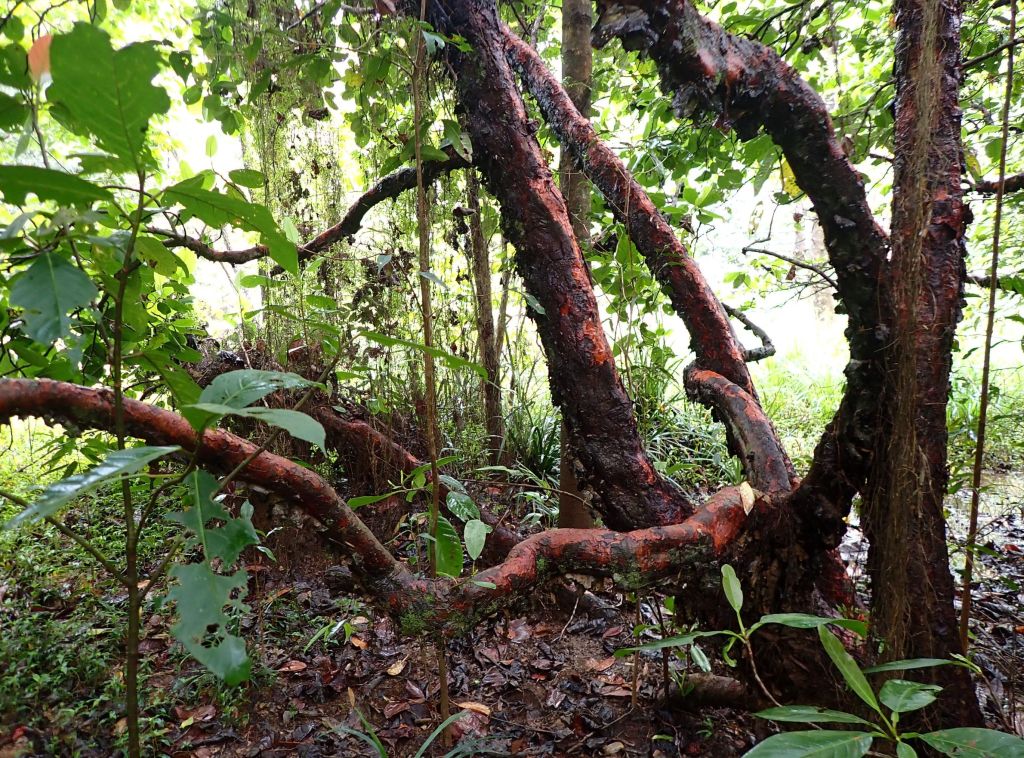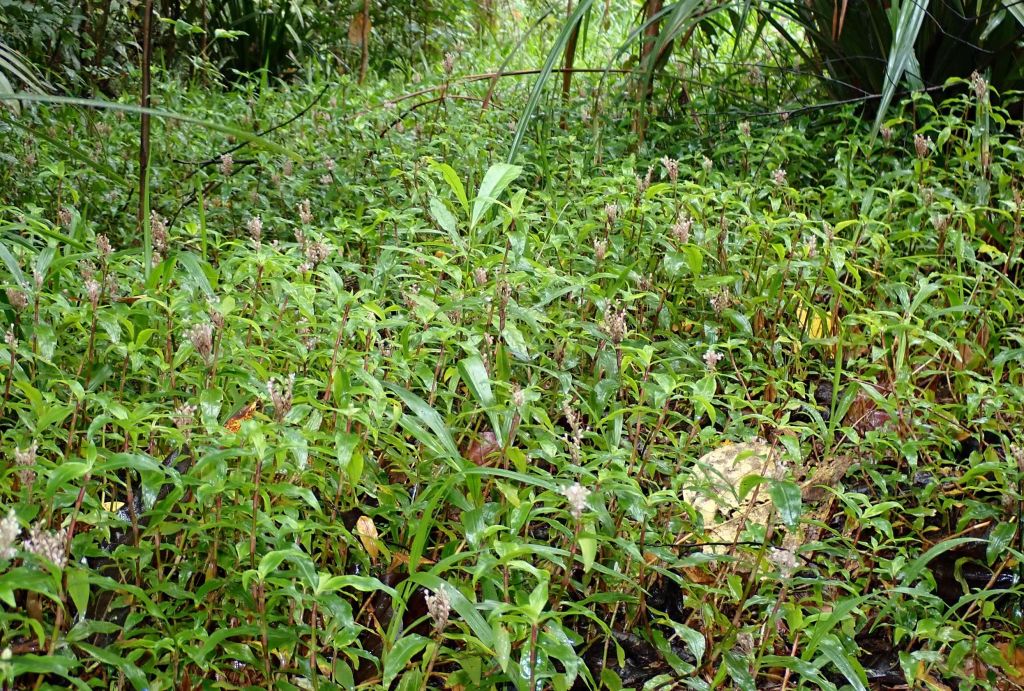For the last couple of months I’ve been gradually working my way around our house, cleaning and painting whenever the weather has been fine and sunny. I’m now onto the final wall which just happens to have been the most tedious to prepare and so I’ve been more easily distracted than usual from the work in hand. Listening to loud calls of a Great-billed Heron a couple of days ago gave me a great excuse to down tools and head to the bird hide. Not a water-bird in sight, but just as I was about to leave I noticed our resident crocodile, Betty, was slowly swimming around the pond. She provided a perfect excuse to indulge in a few peaceful minutes of observation until she hid behind some water chestnut.
Native stingless bees have established nests, or attempted to, in many places on our concrete block house. Green Ants use the house as a highway, spiders make webs and occasionally Sunbirds make nests. A Black Butcherbird regularly patrols the verandah looking for frogs and baby birds so the populations are kept in balance. Sometimes I think the Butcherbird might be taking more than his share but the frogs are still around, they have just got better at hiding! Anyway, back to the cleaning which disturbed the Green Ants and then the bees got nervous and suddenly there was a cloud of upset bees and some brutal murders taking place on the wall.
Another creature to suffer disturbance from my activities along the wall was this delicate and very striking Humped Silver Orb-weaver. When I first noticed it there was no web (I suspect I had blundered into it, intent on my cleaning work), and it was running up and down a single strand of web. I managed a couple of photos when it had a rest on the wall.
Yesterday the spider had rebuilt its web but unfortunately the victims of its sticky strands were native bees – they have certainly been having a tough time here.
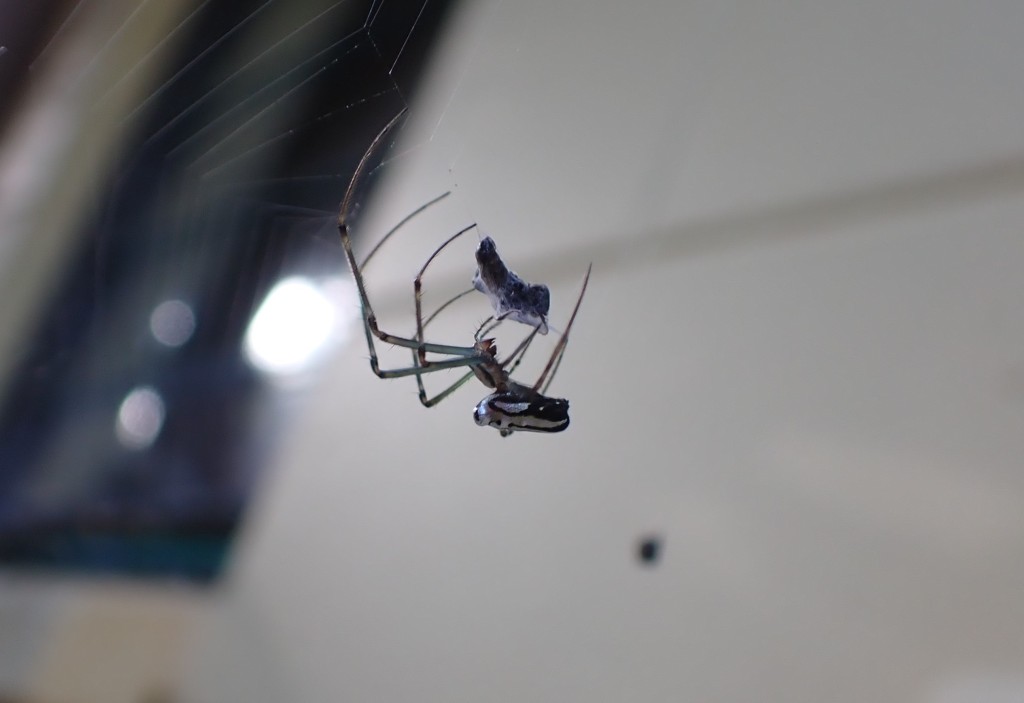
And the day I saw Betty I did return to the hide with a camera after lunch just in time to see her emerged from the water onto the bund wall to bask in the sun. It was such a treat to be able to see her out of the water, they are amazing creatures and deserve to be treated with respect for many different reasons.

